If you’ve ever snuggled with a plush animal, you know the comforting feeling of a soft, huggable companion. But have you ever wondered how these adorable creations come to life? The process of making a plush animal is an intricate journey that blends creativity with craftsmanship. Whether it’s a cute teddy bear or a custom-designed plush toy, making plush animals involves several stages, from design to production.
What exactly goes into making a plush animal?
Plush animals are created using a combination of soft fabrics, eco-friendly filling materials, and detailed craftsmanship. The process involves designing, selecting the right materials, cutting and sewing fabrics, stuffing the animal, and final quality checks. To truly understand how plush animals are made, we’ll break down each step and highlight the factors that make these toys a beloved part of our lives.
1. What Materials Are Used in Plush Animal Manufacturing?
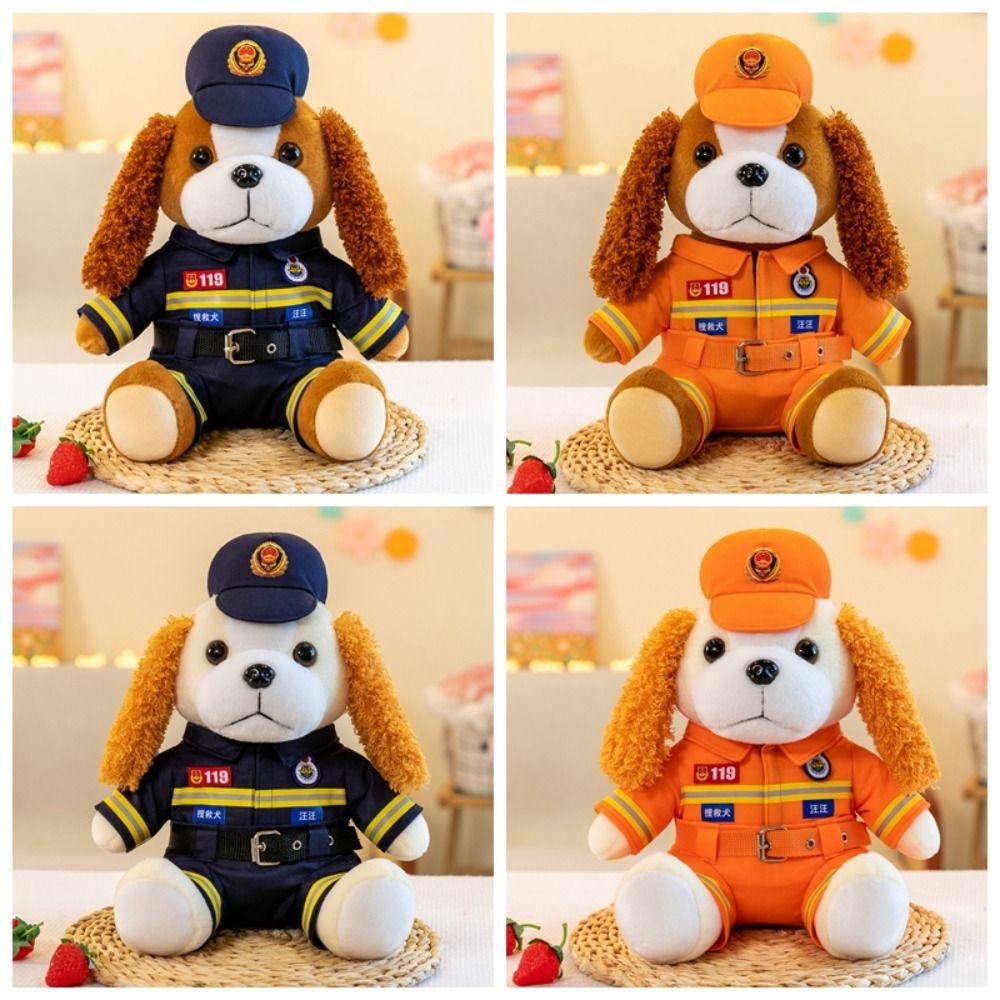
When it comes to crafting plush animals, the right materials are essential to ensure both softness and durability.
Which Fabrics Are Best for Plush Animals?
The fabric used for plush animals plays a huge role in determining their overall feel. Most plush animals are made from soft fabrics like fleece, velour, and plush cotton. These materials have a smooth texture, are durable, and have a high-quality appearance. They can be dyed to a variety of colors and are perfect for creating the soft, cuddly feel that makes plush animals so popular.
Let’s take a look at some common fabrics used:
| Fabric | Features | Best For |
|---|---|---|
| Fleece | Soft, stretchy, and lightweight | Cozy plush animals like bears, bunnies, and dogs |
| Velour | Luxuriously soft with a slight sheen | High-end plush toys, luxurious designs |
| Plush Cotton | Breathable, durable, and soft | Everyday plush toys like stuffed animals and characters |
What Filling Materials Are Safe and Eco-friendly?
Plush animals need filling to give them shape and make them cuddly. The most common filling materials are polyester fiberfill and cotton. These are both soft and moldable, which helps the plush animal maintain its form. As eco-consciousness increases, manufacturers are turning to recycled materials, like recycled polyester, as an alternative to traditional filling materials. This makes the production process more sustainable while still maintaining the plush quality that customers love.
Here are some popular filling options:
| Filling | Description | Eco-friendly Option |
|---|---|---|
| Polyester Fiberfill | Soft, fluffy, and holds shape well | Recycled polyester (PET) |
| Cotton | Natural, soft, and biodegradable | Organic cotton |
| Wool | Eco-friendly and sustainable | 100% natural wool |
2. How Are Plush Animals Designed?
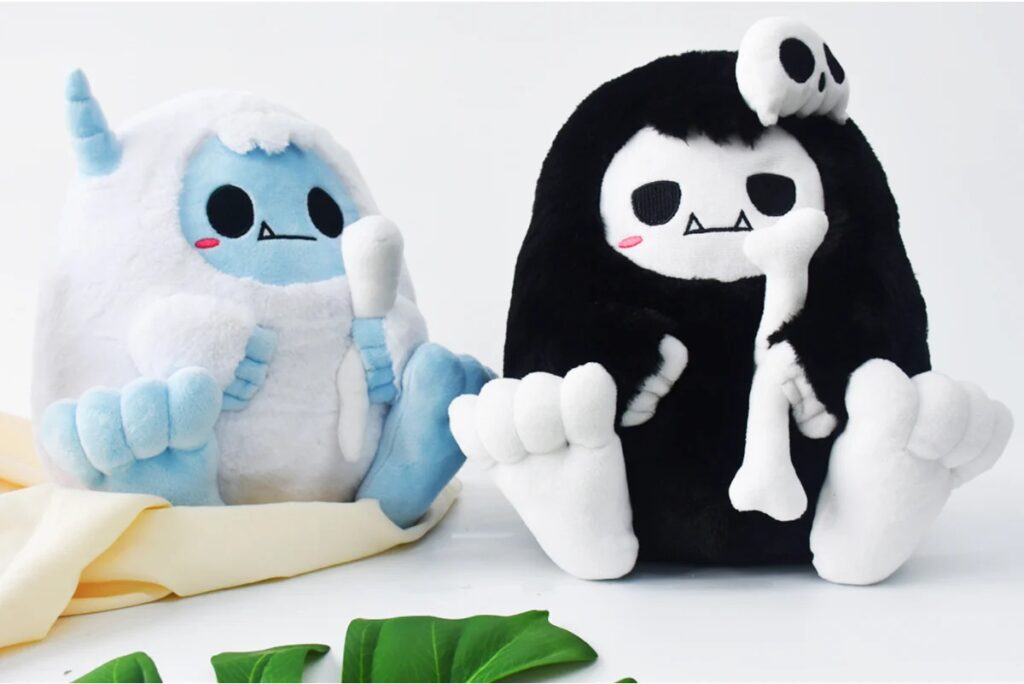
Creating a plush animal isn’t just about sewing fabric together – it’s about designing a character that will resonate with people.
What Is the Design Process for Plush Animals?
The design process starts with concept sketches. Designers create detailed drawings of the plush animal, including its size, shape, and features. The next step is to create a prototype or sample to ensure the design works in the real world. Many manufacturers work with 2D or 3D design software to visualize the plush animal before production begins.
Which Design Tools and Software Do Designers Use?
Designers often rely on software like CAD (Computer-Aided Design) to create detailed, accurate models. This allows them to make precise adjustments before the plush animal goes into production. For example, with 3D design software, a designer can simulate how the fabric will behave, ensuring the final product matches the vision.
Here’s a breakdown of how the design process typically unfolds:
| Step | Action | Tools Used |
|---|---|---|
| Conceptualization | Sketching ideas and determining size | Pencil & Paper, Digital Drawing Apps |
| Prototype Creation | Building a 3D or fabric prototype | 3D Design Software (e.g., Rhino, AutoCAD) |
| Testing & Feedback | Evaluating the prototype and adjusting | CAD Software, Prototype Reviews |
- Character Design: Plush animals often reflect cultural or market trends, so it’s important to understand what characters will appeal to target audiences. Popular characters from movies or shows (like Disney or popular games) often inspire plush designs.
- Prototyping: Prototypes are essential to test the feasibility of the design before committing to mass production. The process helps identify any issues related to size, shape, or fabric behavior, ensuring the design is practical and works well with the materials chosen.
3. How Are Plush Animals Produced in a Factory?
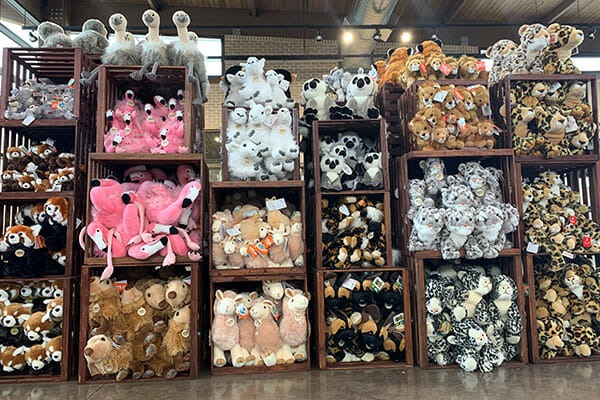
The production process of a plush animal is a blend of machinery and manual labor, ensuring each toy is perfect for cuddling.
What Are the Key Steps in Plush Toy Production?
The production process begins with cutting the fabric. Manufacturers use large cutting machines to ensure each piece of fabric is uniform in size. Once the fabric is cut, the pieces are sewn together to form the basic structure of the plush animal. The stuffing is added next, followed by final touches like stitching, eyes, and other facial features. After assembly, each plush animal undergoes a thorough quality inspection to ensure there are no defects.
How Do Factories Ensure Quality Control?
Quality control is vital in plush animal production. Factories often have dedicated teams that inspect each plush toy during the production process. They check for issues such as uneven stitching, incorrect stuffing, or fabric defects. Additionally, plush animals are tested for safety to ensure they meet international standards, such as EN71 or ASTM regulations, which are designed to protect children from harmful materials.
Here’s how the production process is typically broken down:
| Step | Action | Quality Control Measures |
|---|---|---|
| Cutting | Cutting fabric into shape | Laser Cutting for precision, Manual inspection |
| Sewing | Stitching fabric pieces together | Seam strength testing, Pattern matching |
| Stuffing | Adding filling to plush toys | Filling amount check, Softness test |
| Final Touches | Adding facial features, labels, etc. | Embroidery quality check, Label safety testing |
| Quality Inspection | Ensuring no defects | Detailed review, Physical and chemical safety checks |
- Automation vs. Handcrafting: While machinery plays a significant role in the production of plush animals, many high-quality plush animals are still made with a lot of handcrafted elements, ensuring that attention to detail is preserved. Skilled workers are often involved in adding facial features or perfecting the stitching.
- Testing for Safety: Plush animals undergo rigorous safety testing, especially when sold as children’s toys. Testing may include checks for choking hazards, toxic dyes, and fire resistance. A plush animal that meets the safety standards will be marked with certification labels, ensuring it’s safe for all ages.
4. How to Customize Plush Animals for Different Markets?
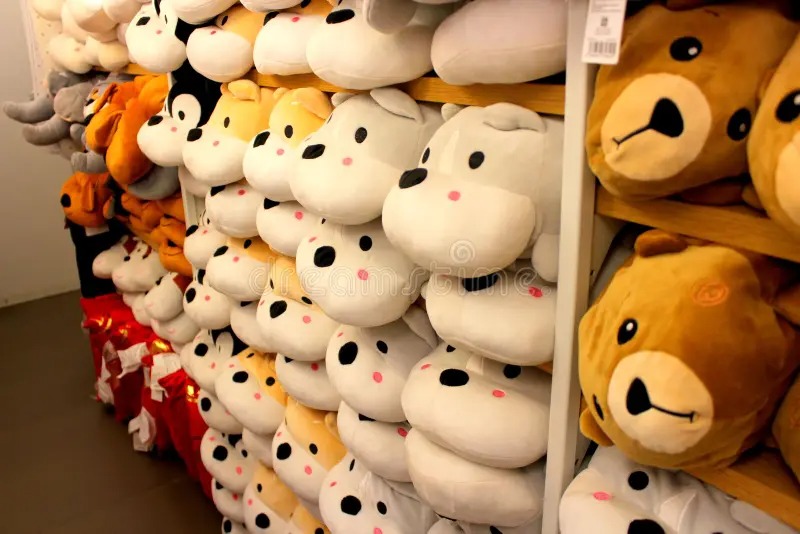
Customization is a key factor in the plush toy industry, allowing businesses to create unique products for their target market.
What Are the Popular Customization Options?
Customization options can include anything from changing the size of the plush animal to adding specific accessories or colors. Many businesses also offer personalized embroidery or screen printing of logos or messages on the plush animal, which is especially popular for branded merchandise or corporate giveaways.
How Are Plush Animals Made to Match Brand Identity?
Many brands use plush animals as a way to promote their identity. Custom plush animals with brand logos, mascots, or specific color schemes can become a powerful marketing tool. For example, a company might create a limited edition plush toy of their mascot to engage customers and increase brand recognition.
Here are some popular customization options:
| Customization Option | Description | Use Case |
|---|---|---|
| Embroidery | Custom designs or logos stitched onto the plush | Corporate gifts, Limited edition toys |
| Screen Printing | Applying custom graphics to the fabric | Branding, Event giveaways |
| Custom Shapes & Sizes | Tailoring the plush animal’s size or shape | Promotional items, Special collections |
| Packaging Customization | Personalized packaging with branding or unique designs | Retail products, Gift bundles |
- Product Innovation: Plush animals can be designed to match trends, such as incorporating popular movie or game characters. For instance, creating plush toys based on the latest superhero movie can appeal to a wide audience.
- Personalization in Retail: Personalization adds an emotional connection to the product. It can be used to create gifts, commemorate an event, or serve as a collectible. For example, plush animals customized with a child’s name or special date make great keepsakes.
5. What Are the Sustainability Practices in Plush Animal Manufacturing?
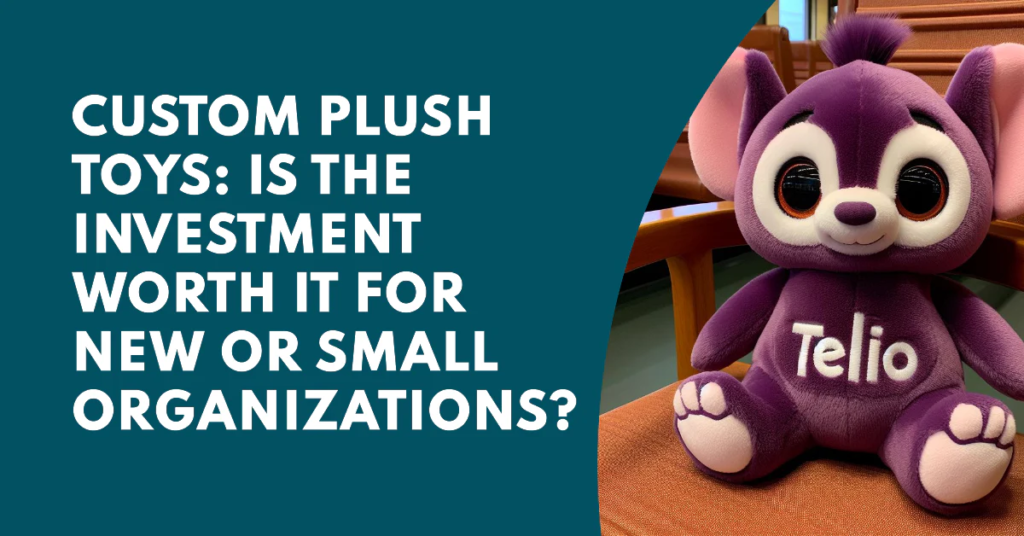
In today’s world, sustainability is a key consideration in the production of plush animals.
Which Materials Are Most Environmentally Friendly?
Materials like organic cotton, hemp, and recycled polyester are gaining popularity in plush animal manufacturing. These materials reduce the environmental impact of production by minimizing the use of synthetic materials and offering eco-friendly alternatives.
How Can Plush Animal Manufacturers Reduce Their Environmental Impact?
Manufacturers can reduce their environmental impact by sourcing sustainable materials, using energy-efficient production methods, and reducing waste. For example, some companies are transitioning to zero-waste production by repurposing fabric scraps and using eco-friendly dyes and finishes.
Here’s a look at sustainable practices in plush animal manufacturing:
| Sustainable Practice | Description | Example |
|---|---|---|
| Eco-friendly Materials | Using natural, organic, or recycled materials for production | Organic cotton, Recycled polyester |
| Energy Efficiency | Reducing energy consumption in the manufacturing process | Solar-powered facilities |
| Waste Reduction | Minimizing waste by repurposing fabric scraps and materials | Zero-waste production lines |
- Waste Reduction: Manufacturers are increasingly focusing on minimizing waste through methods like fabric recycling and reusing excess materials. Additionally, many factories have started to implement eco-friendly dyeing processes to reduce their environmental footprint.
- Eco-Friendly Certifications: Companies that use sustainable practices often pursue certifications like Global Organic Textile Standard (GOTS) to demonstrate their commitment to the environment. These certifications ensure that the products meet strict environmental and social standards.
6. How to Ensure Safety in Plush Animal Production?

Safety is paramount in plush animal production, especially for toys that are meant for children.
What Safety Standards Must Plush Animals Meet?
Plush animals must meet strict safety standards, such as the ASTM F963 standard in the U.S. and EN71 in Europe. These regulations ensure that the toys are free from harmful chemicals, small parts that could be swallowed, and flammability issues.
How Are Plush Animals Tested for Safety?
Safety testing involves checking for choking hazards, ensuring non-toxic dyes are used, and making sure that the stuffing is safe. Plush animals are also tested for durability to ensure that they won’t fall apart with normal use.
Here’s a summary of key safety standards:
| Safety Standard | Description | Regions Covered |
|---|---|---|
| ASTM F963 | Toy safety standard for materials, design, and construction | USA |
| EN71 | European standard for safety of toys | Europe |
| CPSIA | Consumer Product Safety Improvement Act | USA, Global |
- Regulations and Certifications: Understanding the global safety regulations for plush animals is crucial for manufacturers who wish to sell in different markets. For example, toys sold in Europe must comply with EN71, while those sold in the U.S. need to meet ASTM F963.
- Child-Friendly Design: Many plush animals are designed to be safe for all ages, from newborns to older children. Ensuring that a toy is free of sharp edges or harmful chemicals is key to its success in the market.
The Future of Plush Animal Manufacturing
The future of plush animal manufacturing is bright, with increasing demand for personalized and sustainable toys. As the market for plush animals continues to grow, manufacturers will need to stay ahead of trends in customization, sustainability, and safety to remain competitive.
If you’re looking to create your own line of custom plush animals, whether for branding, promotions, or retail, reach out to Kinwin for expert guidance. We specialize in designing and manufacturing high-quality, eco-friendly plush toys that meet your unique specifications.
For more information or to get a quote, visit Kinwin. Let’s create something special together!




